One of the most important Spanish fortifications on the Pacific coast of Mexico, the Fortress of San Diego is now a museum dedicated to the history of Acapulco’s fortress from the city’s earliest beginnings to more modern times. In the opening photo, a display model at the museum shows the fort’s commanding position on the Mexican coastline. Positioned high on a hill, the fort provided protection for the growing community and trading port of Acapulco as depicted in the early days of its existence.
While the Americans to the north were fomenting revolution in 1776, a major earthquake in the Mexican state of Guerrero significantly damaged the fort. The damage was so extensive that the fort was demolished and completely rebuilt. The star shaped fort was renamed as the Fort of San Carlos, however the locals continued to use the San Diego moniker and the reigning monarch, King Carlos III, was cheated out of having the fort named after him by popular disuse.
Our tour guide that accompanied us to the cliff divers provided some basic history as we traveled back to the cruise ship port. Instead of us continuing to walk toward the cruise terminal, we climbed a ramp that led to a beautifully designed pedestrian bridge that carried us over the heavy traffic on the main thoroughfare below. Once we entered the museum, the tour guide became the narrator of our museum tour.
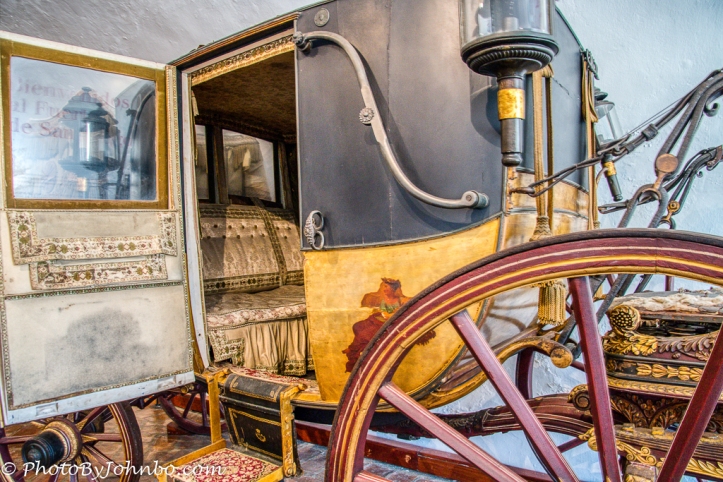 After entering the nearest chamber in the fort, we came upon a royal coach that was beautifully and accurately restored. The tour guide was knowledgeable about the artifacts he discussed, but I was somewhat disappointed that we stayed as a group along with many other groups from other tours. We were not allowed to explore on our own and inquire of the museum staff about items that might have interested us. Of course, it’s quite possible that not all of the museum staff would be able to respond in English so the method they chose to use was probably the best given the situation.
After entering the nearest chamber in the fort, we came upon a royal coach that was beautifully and accurately restored. The tour guide was knowledgeable about the artifacts he discussed, but I was somewhat disappointed that we stayed as a group along with many other groups from other tours. We were not allowed to explore on our own and inquire of the museum staff about items that might have interested us. Of course, it’s quite possible that not all of the museum staff would be able to respond in English so the method they chose to use was probably the best given the situation.
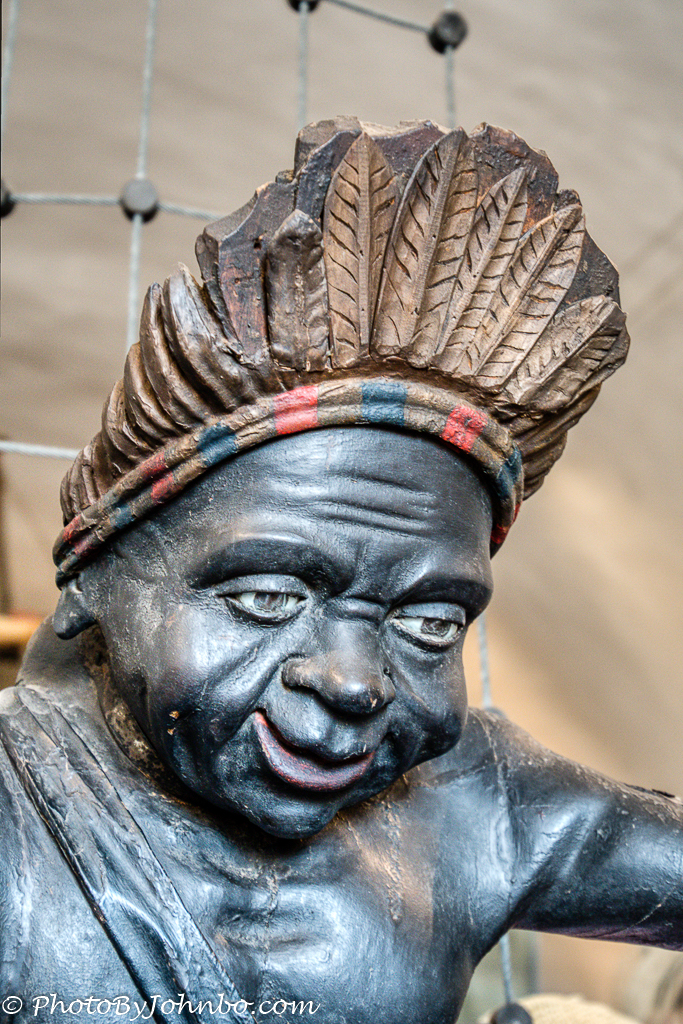 As we walked from one area to another, the tour guide answered questions that came up about the specific areas on our tour and we did walk through several different rooms in the fort, each one configured to a specific topic or set of topics. We learned that after the rebuild in 1783 the fort remained a valuable defense for the city. The Spanish even used the fort in their ill-fated attempt to defeat the Mexican insurgents that ultimately won independence for Mexico and the fort fell into the hands of the revolutionaries.
As we walked from one area to another, the tour guide answered questions that came up about the specific areas on our tour and we did walk through several different rooms in the fort, each one configured to a specific topic or set of topics. We learned that after the rebuild in 1783 the fort remained a valuable defense for the city. The Spanish even used the fort in their ill-fated attempt to defeat the Mexican insurgents that ultimately won independence for Mexico and the fort fell into the hands of the revolutionaries.
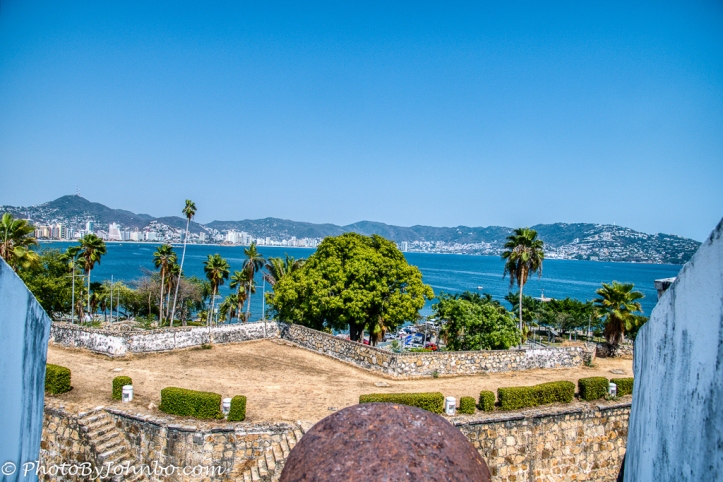 Once we were finished with our guided tour of the museum artifacts, we were given the opportunity to walk the grounds of the fort and soon found ourselves at the upper level looking through the openings in the parapet walls to see the views from over the top of the antique cannons on display.
Once we were finished with our guided tour of the museum artifacts, we were given the opportunity to walk the grounds of the fort and soon found ourselves at the upper level looking through the openings in the parapet walls to see the views from over the top of the antique cannons on display.
 Looking toward the harbor, it is easy to see the commanding height of the fort. From here, only the upper decks of our cruise ship are visible. The longest top deck you can see in the photo is deck 13 on the Norwegian Star. The number of antique cannons on display certainly gave the impression that the fort was well defended when it needed to be.
Looking toward the harbor, it is easy to see the commanding height of the fort. From here, only the upper decks of our cruise ship are visible. The longest top deck you can see in the photo is deck 13 on the Norwegian Star. The number of antique cannons on display certainly gave the impression that the fort was well defended when it needed to be.
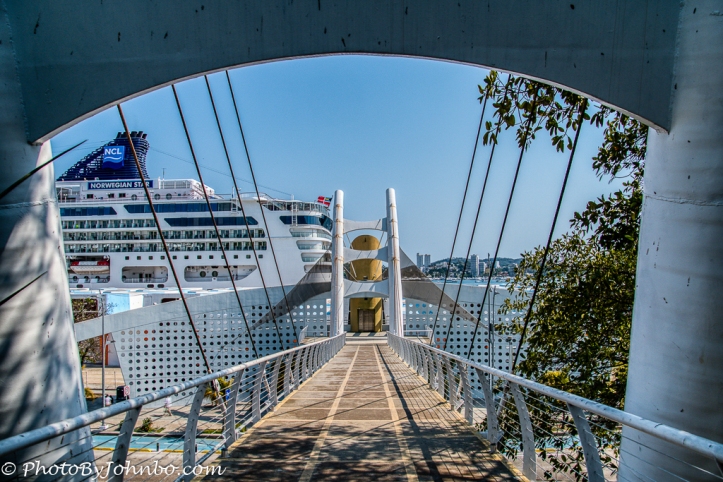 All too soon, it was time to cross the pedestrian bridge again and complete the short walk to the cruise terminal to reboard the Star for our next stop and our first stop outside of Mexico. The gallery of images below feature scenes from the fort’s upper levels and some of the artifacts we viewed in the museum. As usual, in most browsers, you can click on an image to enlarge it and scroll through the gallery.
All too soon, it was time to cross the pedestrian bridge again and complete the short walk to the cruise terminal to reboard the Star for our next stop and our first stop outside of Mexico. The gallery of images below feature scenes from the fort’s upper levels and some of the artifacts we viewed in the museum. As usual, in most browsers, you can click on an image to enlarge it and scroll through the gallery.
John Steiner

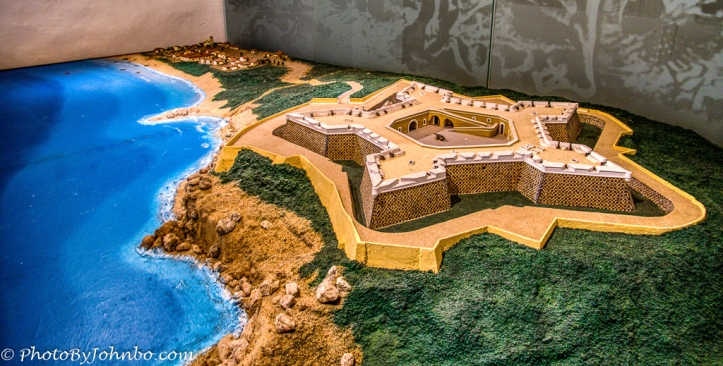
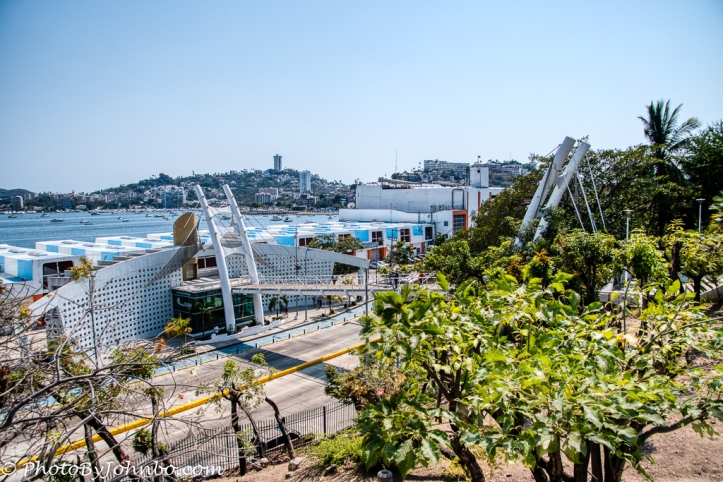










What a formidable fort and a fascinating history!
Those Spaniards knew how to build forts. El Morro at San Juan PR is well built enough that they only added a few armaments in WW II to defend the coastal waters.
What is the statue of the man in feathers depicting? An African man in indigenous wear? Or the indigenous people of that landmass?
That is a good question. I tried to find an answer online, and was unsuccessful. I believe it’s an indigenous person. The statue is in the entryway of one of the museum’s galleries if I recall.
We are scheduled to visit Acapulco again in a few days. The museum is right across the street from the cruise ship dock. If I get the chance, I’ll stop by and see what I can find out.
Thank you for the reply back. I have been trying to find answers on it for awhile as well and can’t find anything. Please keep me updated if you get the answers